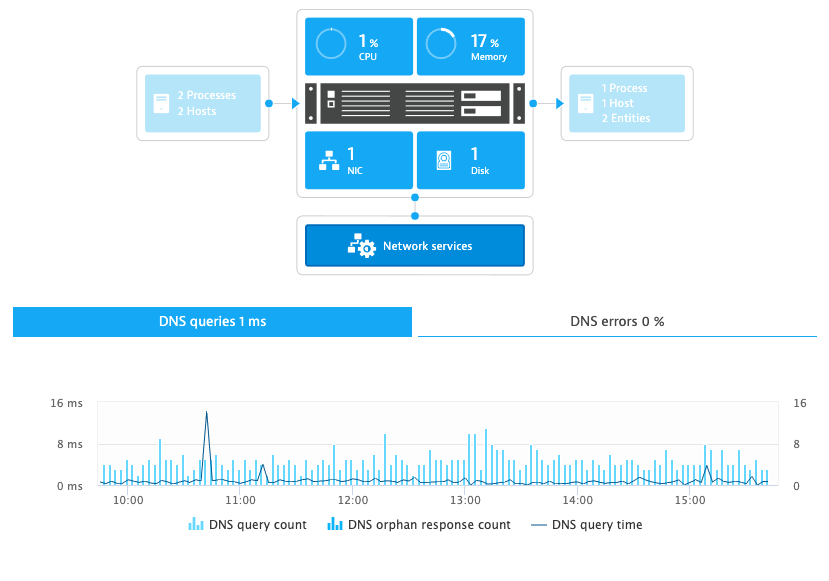
DNS server and you will get the lame-servers, SERVFAIL, and REFUSED errors. SERVFAIL leads to the effect that the client does not do a second DNS try with the domain name attached. DNSAction. RCODE (SERVFAIL) resolving 1.1.1.10.in-addr.arpa/PTR/IN: 8.8.8.853. The SERVFAIL answer has some side effects on quite a number of machines, especially when they try to resolve actually existing machines.DNSAction.SpoofRaw: spoof the response using the supplied raw value as record data (see also DNSQuestion:spoof() and dnsdist_ffi_dnsquestion_spoof_raw() to spoof multiple values).If EDNS is not in use, then the rcode is encoded solely in the DNS header. DNSAction.SpoofPacket: spoof the response using the supplied raw packet A DNS Rcode describes the result of a DNS request.DNSAction.Spoof: spoof the response using the supplied IPv4 (A), IPv6 (AAAA) or string (CNAME) value.DNSAction.ServFail: return a response with a ServFail rcode.DNSAction.Refused: return a response with a Refused rcode.DNSAction.Pool: use the specified pool to forward this query Unexpected RCODE(SERVFAIL) causing bind to crash Question: Every two days or so, my server stops responding entirely to its services.DNSAction.Nxdomain: return a response with a NXDomain rcode.This indicates that the DNS server returned a SERVFAIL error when it. DNSAction.NoOp: continue to the next rule (used for Dynamic Block actions where None has a different meaning) Query to pfSense: drill ->HEADER
#RCODE SERVFAIL WINDOWS#
Right now I have a Redhat server (460) and a Windows server (460) and I am trying to set the Windows DNS up as a slave on the Redhat server. Im seeing a lot of SERVFAIL in my logs when my slave tries to transfer zones from my primary: zone 251.182.65.in-addr. DNSAction.None: continue to the next rule Hello, I'm having some troubles setting up a master/slave configuration for my DNS.DNSAction.HeaderModify: indicate that the query has been turned into a response.DNSAction.Delay: delay the response for the specified milliseconds (UDP-only), continue to the next rule.DNSAction.Allow: let the query pass, skipping other rules.The nameservers will return a REFUSED answer and the recursive resolver is generating that SERVFAIL you're seeing.Ĭonfigure the domain to use the name servers assigned to the hosted zone on its creation. You're getting a SERVFAIL because you're sending DNS queries to a name server that is not authoritative for that domain (those NS are probably from a deleted hosted zone). Those are the ones you must configure in your domain if you want it to resolve to the DNS records created on the HZ. Those are the ones associated to the hosted zones, the ones that will answer for the records created there. The recursive resolver is unable to communicate with upstream authoritative servers.

The recursive resolver, which the stub resolver sends its query to, is overloaded. The stub resolver doesn’t get a response. Just above the records you should have a collapsable section with four name servers. When a user receives SERVFAIL, the failure can be one of the following: The stub resolver fails to send the request.

AA: DnsFlagsAuthoritative: Bilangan bulat: Menunjukkan apakah.

InterfaceIP: DvcIpAdrr: Untai (karakter) Alamat IP perangkat atau antarmuka pelaporan peristiwa. RCODE diurai: EventResultDetails: Untai (karakter) Kode respons DNS seperti yang didefinisikan oleh IANA. These four name servers cannot be modified in any way (and modifying the NS record will most likely break something). RCODE: EventResult: Untai: Hasil peristiwa (berhasil, parsial, kegagalan, NA). Typically, you'll see NOERROR (RCODE:0) when doing most of your successful browsing, all of the other return codes are consider errors.
#RCODE SERVFAIL CODE#
Each return code has its own purpose in the DNS infrastructure.
#RCODE SERVFAIL PLUS#
When you create a HZ it gets four random name servers associated plus the NS and SOA records. Follow The following table explains the DNS return codes that can be returned when doing a DNS query and may appear in your logs. The name server on the SOA is not any of the name servers on the NS, that probably implies that the name servers for that hosted zones are not the ones on the NS.


 0 kommentar(er)
0 kommentar(er)
